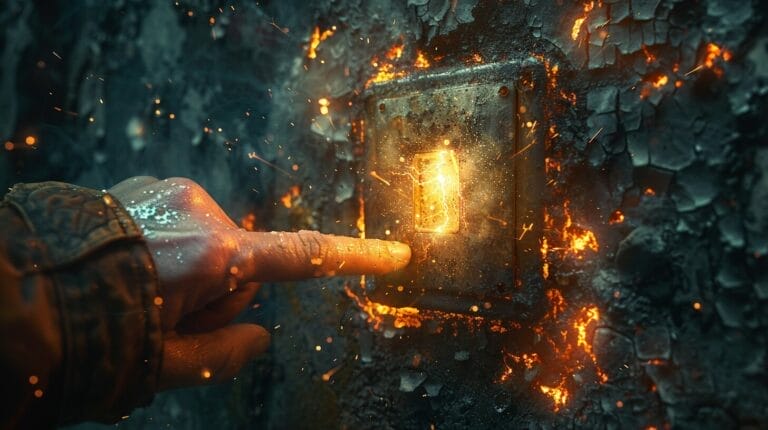Can You Hammer Screws? Surprising DIY Tips Inside
When we’re tackling DIY projects, we often find ourselves wondering if we can cut corners, like hammering screws instead of using a screwdriver. While it might seem like a quick fix, this practice can lead to more issues than we anticipate. We’ll explore why using the right tool is essential, the potential pitfalls of hammering screws, and alternative methods that guarantee our projects are both safe and successful.
Let’s get into these surprising tips and see how we can improve our DIY game by making smarter tool choices.
Key Takeaways
- Hammering screws can deform the screw head, making it unusable with a screwdriver.
- Screws hammered into materials do not provide secure or stable holds.
- Hammering screws into walls can cause cracks and damage plaster.
- Using a screwdriver ensures proper threading and a secure hold for screws.
- Power drills and electric screwdrivers offer faster and safer screw insertion.
Understanding Basic DIY Tools: Hammer vs Screwdriver

Understanding the primary uses and functions of both a hammer and a screwdriver is crucial for any DIY project. These tools form the foundation of any toolkit, and knowing how to use them effectively can make or break our projects.
A hammer is typically used when we need to drive nails into wood or other materials, ensuring our structures hold firm. Nails, with their smooth shanks, are ideal for tasks requiring quick assembly and disassembly.
In contrast, a screwdriver is essential when working with screws. Screws have threads that offer a strong grip, making them perfect for tasks requiring stability and durability. With a variety of screw heads and corresponding screwdriver types, we can tackle a range of materials and projects, from assembling furniture to securing fixtures.
Anchor Your Knowledge: Can You Hammer Screws?

A common question that often arises in DIY projects is: Can we hammer screws? It’s tempting, especially when we’re in a rush or can’t find the right tool. However, hammering screws isn’t recommended. Here’s why:
- Guarantee to the Screw Head: Hammering can deform the screw head, making it nearly impossible to use a screwdriver later.
- Properly Secure: A hammered screw doesn’t secure materials effectively. Screws are designed to be threaded into a hole to create a strong bond.
- Wall Integrity: Hammering screws into a wall can cause cracks or damage the plaster, compromising the wall’s integrity.
- Personal Safety: A slipped hammer can lead to injuries, while a screwdriver offers more control and precision.
Instead, always use a screwdriver to insert screws correctly. By doing so, we maintain the integrity of our projects and guarantee a durable fix.
Consideration of Alternatives: Other Tools for Inserting Screws

There are many alternative tools available to help us insert screws efficiently and securely. While a hammer might seem like a quick fix, we can achieve better results with the right tools.
Power drills and electric screwdrivers are game-changers. These tools not only make inserting screws faster but also guarantee a tight, secure fit. They’re perfect for those of us who value precision and speed in our DIY projects.
Manual screwdrivers still have their place, especially in situations where a power tool might be overkill or not feasible. They offer control and finesse, which is particularly useful for delicate tasks.
The Importance of Using the Right Tool for the Job in DIY Projects

Choosing the appropriate tool for the job guarantees that our DIY projects are not only important but also safe and high-quality. When we use the right tools, we minimize the risks and guarantee our projects hold up over time.
Using improper tools can lead to several issues, such as:
- Vital Project Quality: Incorrect tools can damage materials and result in poorly executed work.
- Increased Safety Risks: The potential for accidents rises when we use the wrong tools, putting our safety at risk.
- Wasted Time and Resources: Inefficiency and mistakes mean more time and money spent fixing errors.
- Frustration and Burnout: The wrong tools can lead to avoidable frustrations, dampening our enthusiasm for future projects.
Consider a case study where someone used a hammer instead of a screwdriver. The screws didn’t set correctly, compromising the structural integrity of the project. Worse, the hammer slipped, causing a minor injury. This illustrates how vital it’s to match our tools with the task at hand.
Building Your DIY Toolkit: Essential Tools for Beginners

Creating a well-rounded DIY toolkit guarantees that we’re always ready to tackle a variety of projects with confidence. For beginners, building this toolkit with essential tools sets the foundation for successful and innovative DIY endeavors.
First, a quality hammer is indispensable. Next, a set of screwdrivers, both flathead and Phillips, is essential. A tape measure ensures precision in all your measurements, while a utility knife offers versatility. Investing in a reliable cordless drill can make drilling and driving screws much easier. Pliers, both needle-nose and regular, are vital for gripping, bending, and cutting wire. Don’t forget an adjustable wrench for tightening or loosening nuts and bolts.
To keep these tools in top shape, proper maintenance and storage are key. Regularly clean and oil your tools to prevent rust and deterioration. Store them in a dry, organized space like a toolbox or pegboard.
Conclusion
In our DIY adventures, we’ve learned that using the right tool, like a screwdriver instead of a hammer, is vital for success. Hammering screws can lead to damaged materials and unsafe outcomes.
By choosing the proper tools, we guarantee our projects are secure and long-lasting. Let’s build our toolkits wisely, and remember, a well-chosen tool makes all the difference.
With the right approach, our DIY projects will always stand the test of time.
Frequently Asked Questions
Can I use a hammer to drive screws?
No, using a hammer to drive screws is not recommended as it can damage both the screw and the material you are working with. To properly drive screws, use a screwdriver or a power drill.
What type of screws are best for DIY projects?
It is recommended to use screws made of materials like nylon or hardened steel for DIY projects. These materials provide durability and strength for various applications.
How can I remove a stuck screw?
To remove a stuck screw, try using a screwdriver with a proper fitting head. If the screw is still stuck, you can use a screw extractor tool to help remove it.
Can I use any drill bit to drive screws?
It is important to use a drill bit specifically designed for driving screws. Using the correct bit ensures that the screw is driven effectively and prevents damage to the screw head.
What is the best position to drive screws into wood?
When driving screws into wood, it is best to position the screw exactly perpendicular to the surface. This ensures a secure and tight fit without causing the wood to split.







